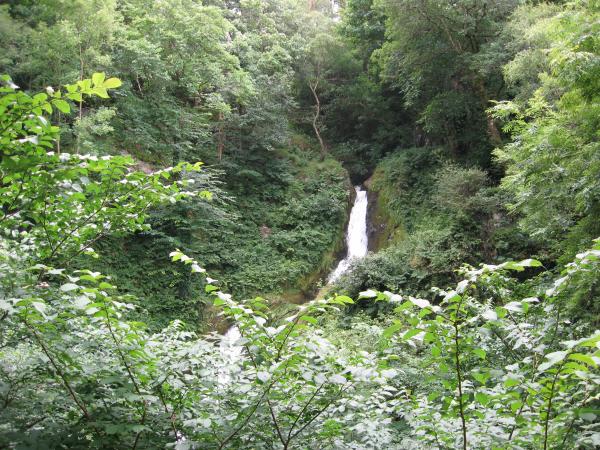|
|
|
From looking at a mountain last month we move to the scenic attractions of being in amongst the mountains this month. Not all mountains are bare, windswept things, particularly when their lower flanks are sheltered by other mountains, with the result that all sorts of wonderful pictures of rising lush woodland landscapes can be obtained in these uninhabitable areas. First glance hopefully says something about South America - at least to people who've never been there - but this is in fact from the upper reaches of Dolgoch Falls, following the tendency of the last couple of years to use pictures around the Dysynni and Fathew valleys in Mid-Wales for the July Seasonal Area image. The Falls consist of waters off Mynydd Esgairweddan tumbling down Nant Dolgoch into the Afon Fathew. Once in the Fathew the water, its contribution to the local tourist economy made, flows down to Tywyn and the Cambrian Coast. Being home to a very accessible set of falls, with nice footpaths running from the local railway station (Dolgoch Falls - change trains, stations, operators and tickets at Tywyn from the Cambrian Coast line to the Talyllyn Railway), the valley is popular with tourists who either stay locally or catch the train up (or occasionally risk their necks on the road). With all the people wandering around taking photos like this all day of falls which seem to be falling purely for their viewing pleasure, it takes a moment on visiting them late in the evening after everyone's gone and the air is still to realise that of course, unlike many tourist attractions, Dolgoch Falls aren't switched off after closing time. The railway has thoughtfully named one of their locomotives after the Falls (No. 2 Dolgoch, built by Fletcher Jennings in 1866, named on arrival and, apart from a brief patriotic period as Pretoria following the Boer War, named after the Falls ever since) and currently has it painted in a smart coat of red. This is officially for historic reasons, but is really quite appropriate - Dolgoch, after all, translates into English as "Red meadow". One is tempted to ask in this wooded ravine where the red meadow was. |
